Dive Details
Location
Date
Sunday 10 January 2016
Time
8:10am - 9:41am
Details
With the rough weather from the previous week and the poor conditions at Bare Island yesterday, I did not have high expectations for Kurnell today. That said, the swell had dropped a lot and Georges River did not get a lot of rain so there was a possibility of reasonable conditions.
I parked at The Steps and conditions there looked pretty good with only a small swell hitting the exit. I geared up and walked up (and down) to The Leap. It was about an hour before high tide so the water was quite high. The swell here was not too bad although the surface was a bit choppy. I slid down the wall (the low platform was underwater) and didn't have far to jump into the water. Visibility on the surface was 3 to 5 metres.
I descended and swam to the sand line at around 60° arriving near Pygmy Rock. Visibility here was around 10 metres and water temperature around 20°C. There wasn't much surge either. It was going to be a good dive.
I swam along the sand line towards The Steps. I was expecting the see the huge school of striped catfish at Seahorse Rock but there were only a few left. Where they had been previously was hiding some debris from the tornado.
I continued on towards The Steps and check in the gap in the large rocks for the large juvenile weedy seadragons. I found both there. One (PT2015062401) I believe is a male and the other (PT2015081601) I think is a female.
I swam on and just past Southern Cross Rock I found the female (PT2013122201) with the cut first appendage. Before I reached Seadragon Alley I found a male with eggs (PT2014030803).
In Seadragon Alley I only saw two weedies: a juvenile (PT2015122201) around mid-way and the female with the deformed body (PT2014030901) and a large juvenile (PT2015051001) near the end.
I swam on past Big Rock without seeing any more weedies. There was a lot of help floating around on the sand between Big Rock and Diversity Rock which could have been hiding weedies. After Big Rock I headed up the reef to look for the two pygmies. I was extremely disappointed not to find either pygmy. The female (IL2015072601) had been there for over 5 months. The male (IL2015121201) not so long. Hopefully they were just hiding and I will see them again.
I descended to the sand line and swam to the rock with pygmies just past the basket star. I found a male straight away. I thought it was the male that Kim had found on 15 December but on checking my photos I believe it is a new male (IL2016011001). I couldn't find the female.
I swam on to Diversity Rock. I found "Daniel" in the pink sea tulips and eventually found "Rosie" and "Arnold' hiding in the sponges on the rock behind Diversity Rock. I could not find "Noel", nor could I find the angler. I then looked for the female pygmy pipehorse (IL2015123101) I'd seen on New Year's eve. I found it and then found a male (IL2016011002).
I headed over to "Di" and "Mikhail" and saw a weedy seadragon (PT2014123003) on the way. Both "Di" and "Mikhail" were on their usual rock.
I swam to the boulders and did my safety stop as I swam to the exit. It was around 30 minutes after high tide when I exited so I was able to crawl out to the top of the rocks.
Seas
Slight surge
Visibility
5 to 10 metres
Duration
90 minutes
Maximum depth
21.8 m
Average depth
14.8 m
Water temperature
19.8°C
Dive Profile from Citizen Hyper Aqualand
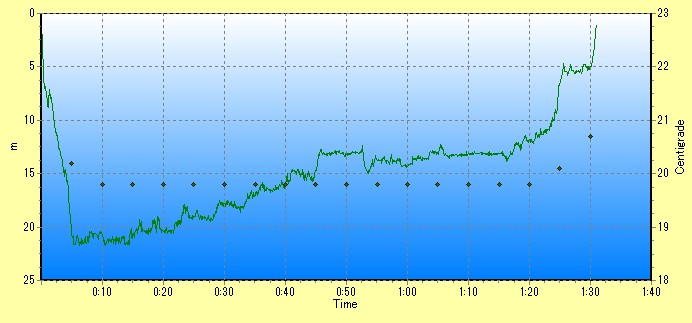
Tides at Botany Bay AEDT
Note that tides at dive site may vary from above location.
Low
2:43am
0.43m
High
9:16am
1.85m
Low
3:54pm
0.27m
High
9:48pm
1.40m
Camera gear
Camera
Nikon D7000
Lens
Nikon AF Micro-Nikkor 60mm f/2.8D
Housing
Ikelite 6801.70
Lens port
Ikelite Flat Port 5502.41
Strobe
2 x Ikelite SubStrobe DS161
Photographs
Depth information, where present, indicates the depth of the camera when the photograph was taken and can be used to approximate the depth of the subject.
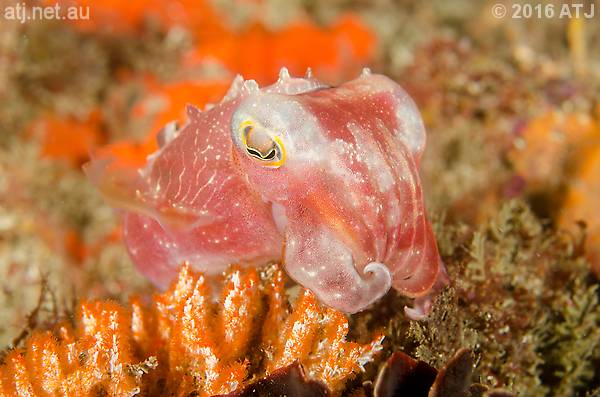
Reaper cuttlefish, Sepia mestus. 20.4 m.

Striped catfish, Plotosus lineatus. 21.4 m.
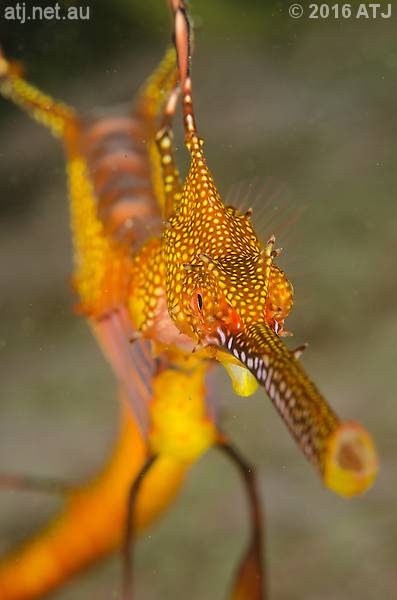
Weedy seadragon, Phyllopteryx taeniolatus, (PT2015062401). 20.4 m.
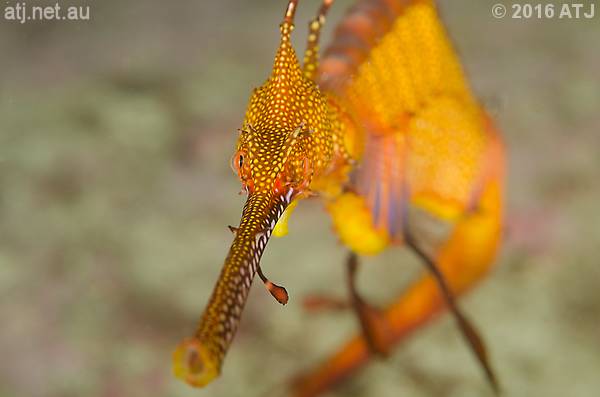
Weedy seadragon, Phyllopteryx taeniolatus, (PT2015062401). 20.3 m.

Weedy seadragon, Phyllopteryx taeniolatus, (PT2015062401). 20.3 m.
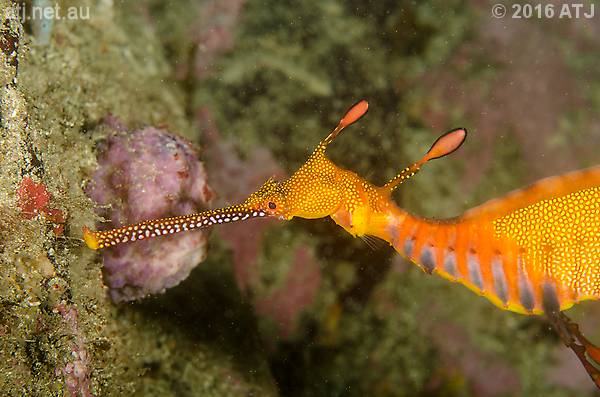
Weedy seadragon, Phyllopteryx taeniolatus, (PT2013122201). 19.1 m.
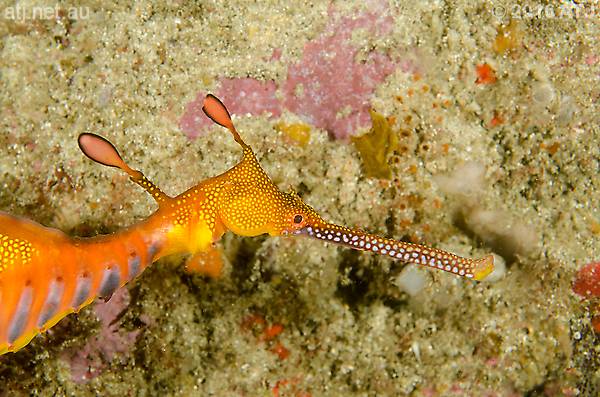
Weedy seadragon, Phyllopteryx taeniolatus, (PT2013122201). 19 m.
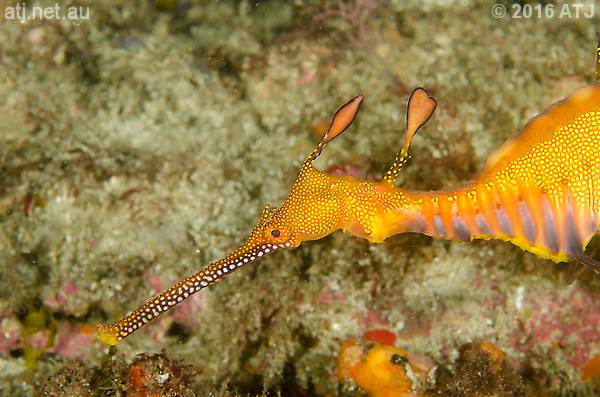
Weedy seadragon, Phyllopteryx taeniolatus, (PT2014030803). 19.1 m.

Eggs on the tail of a male weedy seadragon, Phyllopteryx taeniolatus, (PT2014030803). 19 m.
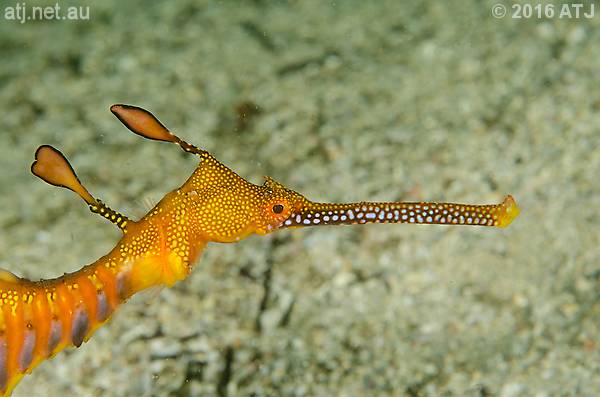
Weedy seadragon, Phyllopteryx taeniolatus, (PT2014030803). 19.3 m.
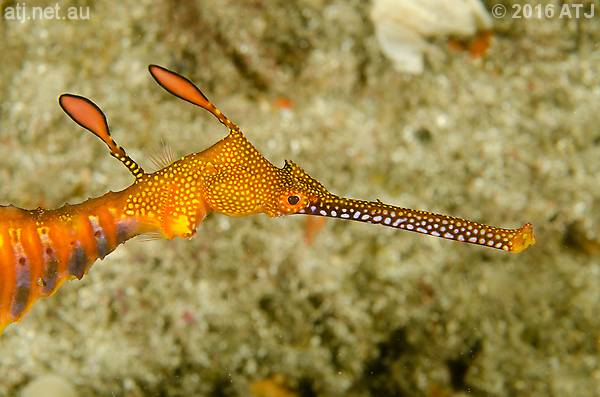
Weedy seadragon, Phyllopteryx taeniolatus, (PT2015011102). 17.8 m.

Weedy seadragon, Phyllopteryx taeniolatus, (PT2015011102). 18 m.
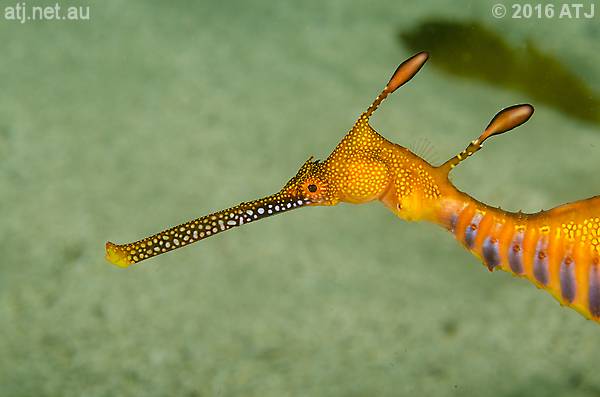
Weedy seadragon, Phyllopteryx taeniolatus, (PT2015122201). 18.3 m.
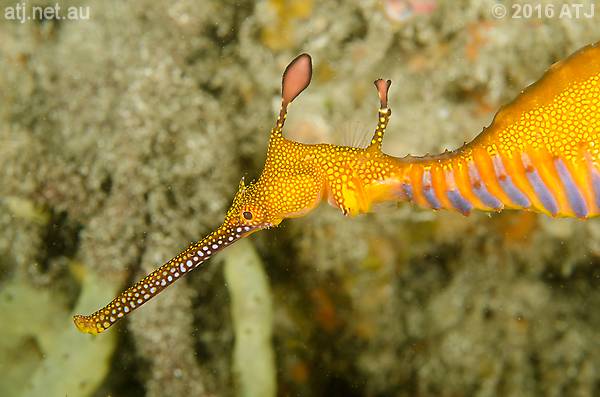
Weedy seadragon, Phyllopteryx taeniolatus, (PT2015051001). 16.1 m.
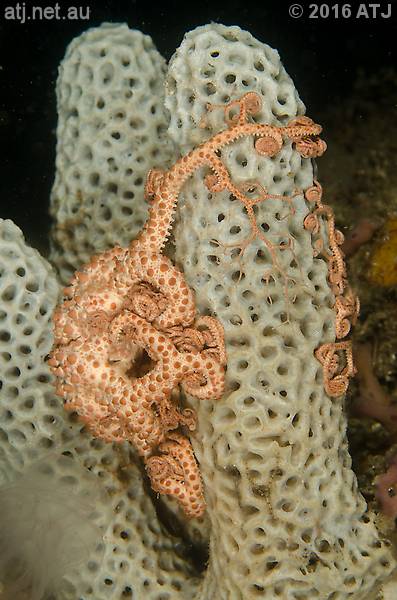
Basket star, Astrosierra amblyconus. 14.1 m.
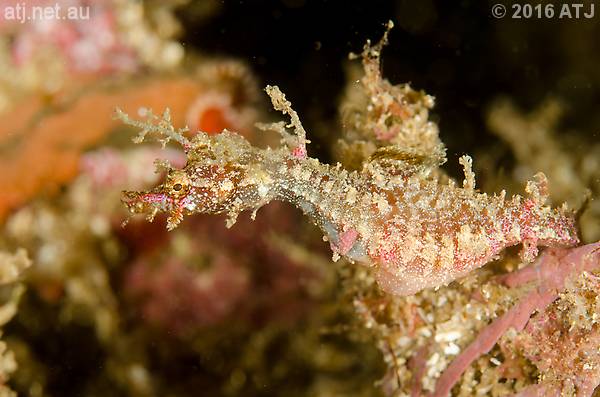
Male Sydney pygmy pipehorse, Idiotropiscis lumnitzeri, (IL2016011001). 13.9 m.

Male pot-bellied seahorse, Hippocampus abdominalis, ("Daniel"). 13.6 m.
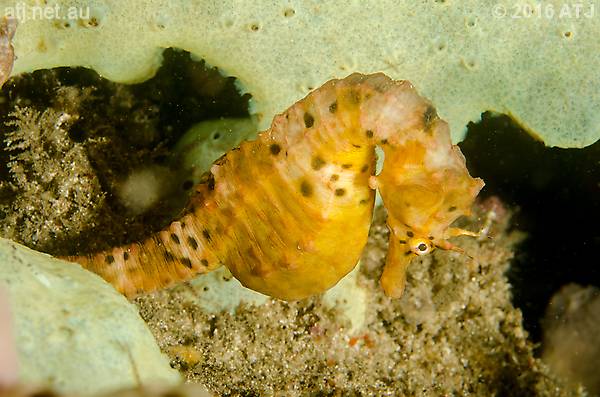
Female pot-bellied seahorse, Hippocampus abdominalis, ("Rosie"). 13 m.

Male pot-bellied seahorse, Hippocampus abdominalis, ("Arnold"). 12.8 m.

Female pot-bellied seahorse, Hippocampus abdominalis, ("Rosie"). 13.1 m.

Female pot-bellied seahorse, Hippocampus abdominalis, ("Rosie"), with a male ("Arnold") in the background. 13 m.

Female Sydney pygmy pipehorse, Idiotropiscis lumnitzeri, (IL2015123101). 13.2 m.

Female Sydney pygmy pipehorse, Idiotropiscis lumnitzeri, (IL2015123101). 13.2 m.
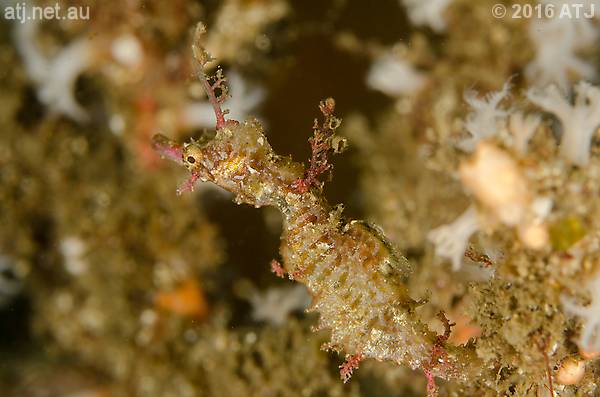
Male Sydney pygmy pipehorse, Idiotropiscis lumnitzeri, (IL2016011002). 13.1 m.

Male Sydney pygmy pipehorse, Idiotropiscis lumnitzeri, (IL2016011002). 13.2 m.

Male Sydney pygmy pipehorse, Idiotropiscis lumnitzeri, (IL2016011002). 13.1 m.
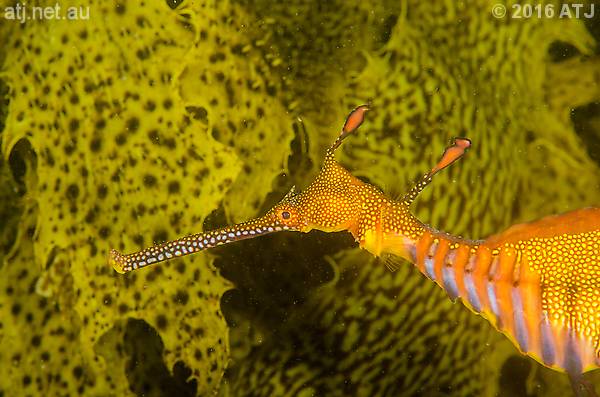
Weedy seadragon, Phyllopteryx taeniolatus, (PT2014123003). 11.8 m.
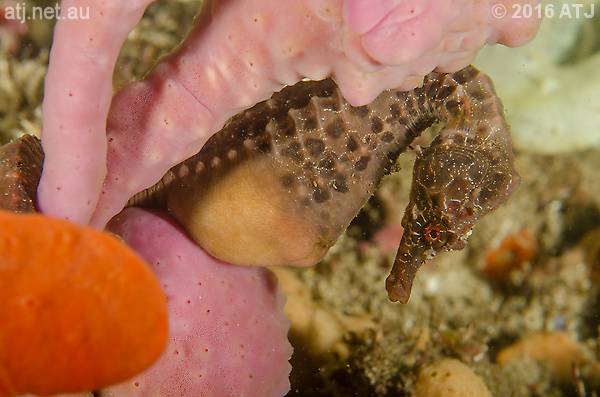
Male pot-bellied seahorse, Hippocampus abdominalis, ("Mikhail"). 11.3 m.
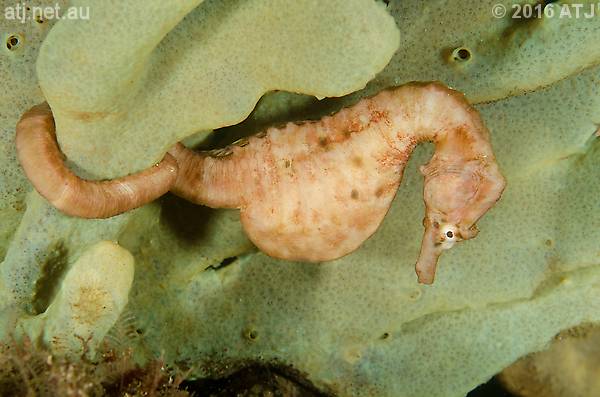
Female pot-bellied seahorse, Hippocampus abdominalis, ("Di"). 11.1 m.

Female pot-bellied seahorse, Hippocampus abdominalis, ("Di"). 11 m.